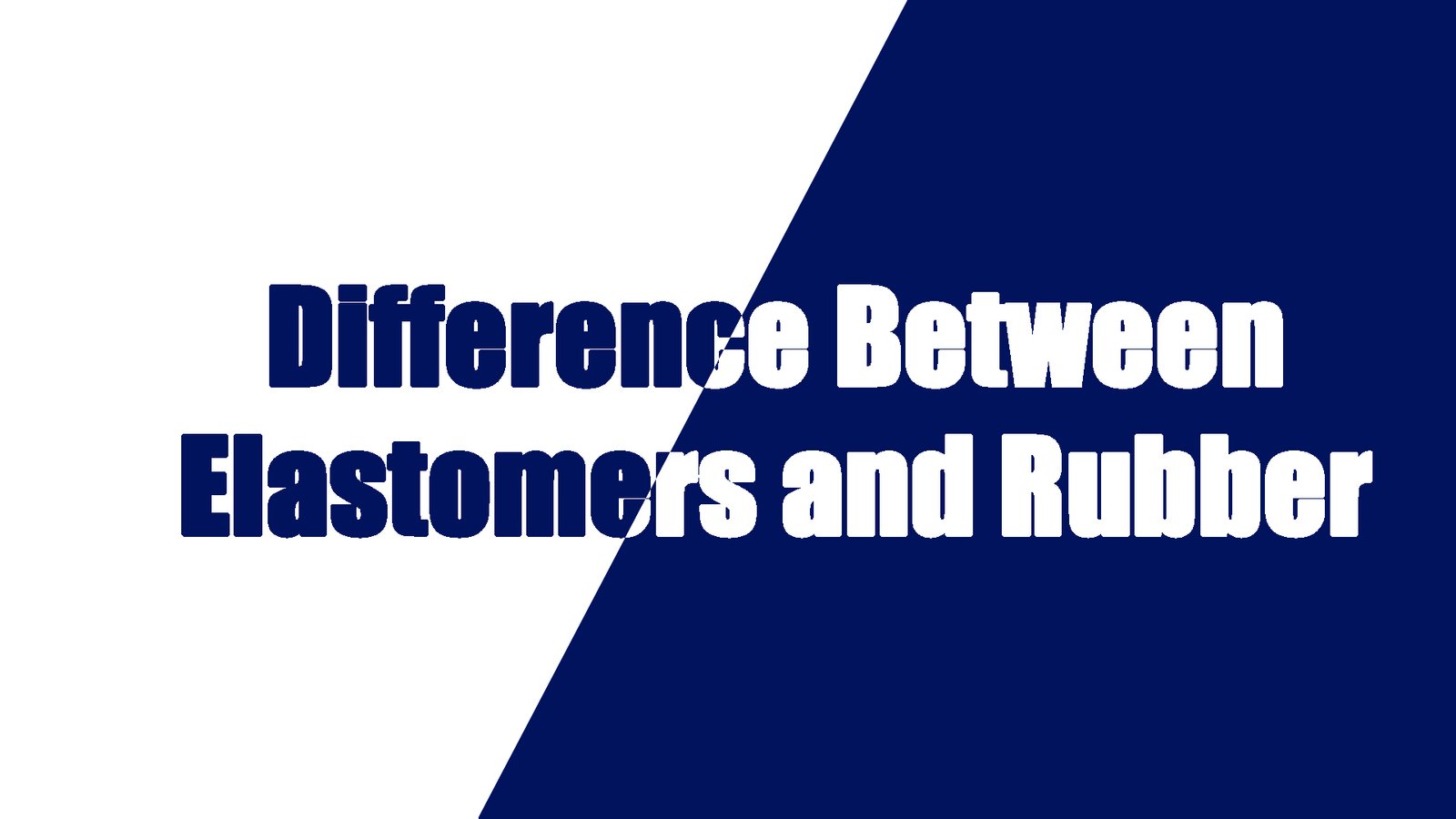Elastomers and rubber are both highly elastic materials capable of significant deformation under external forces, with the ability to return to their original shape once the force is removed. However, they differ significantly in terms of structure, performance, and applications. Below is a detailed analysis from multiple perspectives including definitions, types, properties, and application areas.
Definition and Basic Concepts
- Elastomers: Elastomers are a group of polymers that exhibit high elasticity, meaning they can stretch significantly under external force and return to their original shape after the force is removed. They have long, flexible molecular chains that allow them to stretch and relax easily. Elastomers include natural rubbers, synthetic rubbers, and thermoplastic elastomers (TPE), among others.
- Rubber: Rubber is a type of elastomer, generally referring to either natural rubber (NR) or synthetic rubber. The characteristic feature of rubber is its ability to undergo reversible deformation when subjected to external forces and return to its original shape once the force is removed. The base of rubber is its molecular chain structure, which is typically strengthened through vulcanization (cross-linking).
Molecular Structure and Elasticity
- Elastomers: Elastomers generally have long, flexible molecular chains. They can stretch and deform significantly when force is applied, and once the force is removed, they return to their original shape. Thermoplastic elastomers (TPE) also have the added benefit of being reprocessable— they can be heated and reshaped multiple times. TPE typically has a tensile strength range of 10-40 MPa and can elongate up to 500%-700%.
- Rubber: Natural rubber has a cis structure, allowing it to stretch considerably. When vulcanized, rubber molecules form a stable cross-linked network that gives it superior elasticity. The tensile strength of natural rubber at 25°C ranges between 20-30 MPa, with an elongation of over 500%.
Types and Applications
Elastomers: There are various types of elastomers, including:
- Thermoplastic Elastomers (TPE): TPE combines the properties of both plastic and rubber, offering excellent flexibility and processability. It is widely used in automotive, electronics, and medical devices. TPE hardness ranges from 10 Shore A to 70 Shore D and has excellent UV resistance, high and low temperature tolerance, and chemical resistance.
- Thermoset Elastomers: These elastomers are typically cross-linked during curing, making them highly durable and resistant to high temperatures. They are commonly used in high-strength applications like industrial machinery and aerospace.
- Polyurethane Elastomers (PU): Polyurethane elastomers are known for their exceptional abrasion resistance, tear strength, and oil resistance. They are widely used in applications such as conveyor belts, shoe soles, and high-durability products.
Rubber: The main types of rubber include:
- Natural Rubber (NR): Sourced from rubber tree latex, natural rubber exhibits excellent elasticity and abrasion resistance. It is commonly used in tire manufacturing, industrial seals, and vibration dampers.
- Synthetic Rubbers: These include styrene-butadiene rubber (SBR), neoprene (CR), nitrile rubber (NBR), and others, which are often more cost-effective than natural rubber and can be engineered to provide specific properties. Synthetic rubber is widely used in tires, seals, hoses, and various industrial applications.
Performance Comparison
Elastomers:
- Tensile Strength: The tensile strength of elastomers varies depending on the type. TPE typically has a tensile strength range of 10-40 MPa, and an elongation of 500%-700%.
- Temperature Resistance: Thermoplastic elastomers (TPE) can usually operate within a temperature range of -50°C to +150°C. Thermoset elastomers offer even higher temperature resistance and can withstand temperatures up to +200°C.
- Aging Resistance: TPEs are known for their strong UV resistance, ozone resistance, and oxidative stability, meaning they maintain their physical properties over long periods of time.
Rubber:
- Tensile Strength: Natural rubber typically has a tensile strength of 20-30 MPa, with elongation of over 500%. Synthetic rubbers’ tensile strengths vary by type but generally range from 10-35 MPa.
- Temperature Resistance: Natural rubber can withstand temperatures from -50°C to +90°C, while synthetic rubbers can operate in higher temperatures, with some high-performance rubbers capable of withstanding up to +200°C.
- Aging Resistance: Natural rubber is more prone to aging when exposed to UV light, ozone, and heat, whereas synthetic rubbers typically offer better resistance to aging.
Vulcanization Process
Elastomers:
- Thermoplastic Elastomers (TPE): TPEs do not require vulcanization because they soften and can be reshaped upon heating. This gives them excellent processability and allows for increased production efficiency.
- Thermoset Elastomers: These materials require vulcanization to form a cross-linked network, improving their heat resistance, hardness, and strength.
Rubber:
- Natural and Synthetic Rubber: Rubber materials generally require vulcanization to enhance elasticity, strength, and aging resistance. After vulcanization, rubber can handle greater external forces while retaining its elasticity over time.
Applications
Elastomer Applications:
- TPEs are widely used in automotive interior parts, electronic device housings, medical devices, sports equipment, and household appliances due to their flexibility, processability, and environmental resistance.
- Polyurethane elastomers are employed in tires, conveyor belts, shoe soles, vibration dampers, and industrial machinery parts due to their exceptional wear resistance and durability.
Rubber Applications:
- Natural rubber is commonly used in tires, rubber bands, seals, and vibration dampers.
- Synthetic rubbers are found in automotive tires, hoses, electrical cables, and industrial applications, where specific performance characteristics are required.
Despite their similarities, elastomers and rubber differ significantly in terms of material composition, performance characteristics, and application fields. Rubber generally refers to either natural or synthetic rubber, which has been a staple material in traditional industries. Elastomers, on the other hand, encompass a broader range of materials, including thermoplastic elastomers (TPE) and polyurethane elastomers, which offer improved processability, aging resistance, and a wide array of modern applications. These materials are suitable for a broader range of industries, including automotive, electronics, medical, and manufacturing, where performance requirements are continuously evolving.




































